Ilya Kiselev
A 23 $μ$W Keyword Spotting IC with Ring-Oscillator-Based Time-Domain Feature Extraction
Aug 01, 2022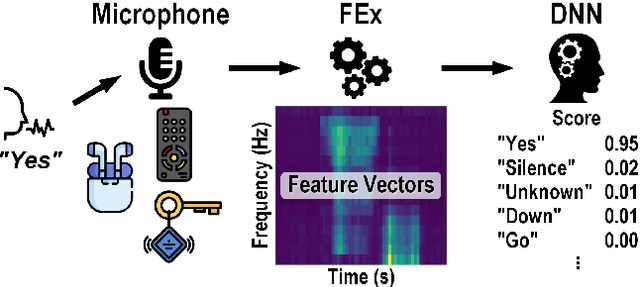
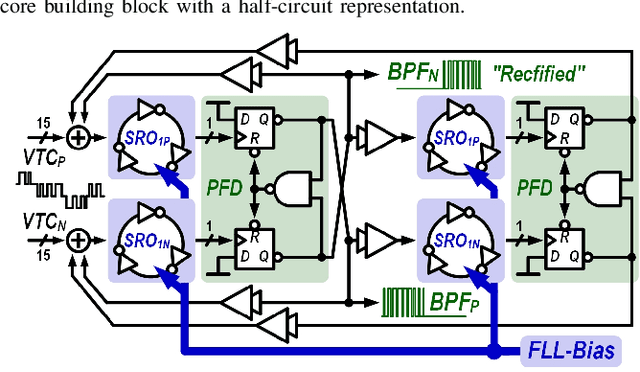

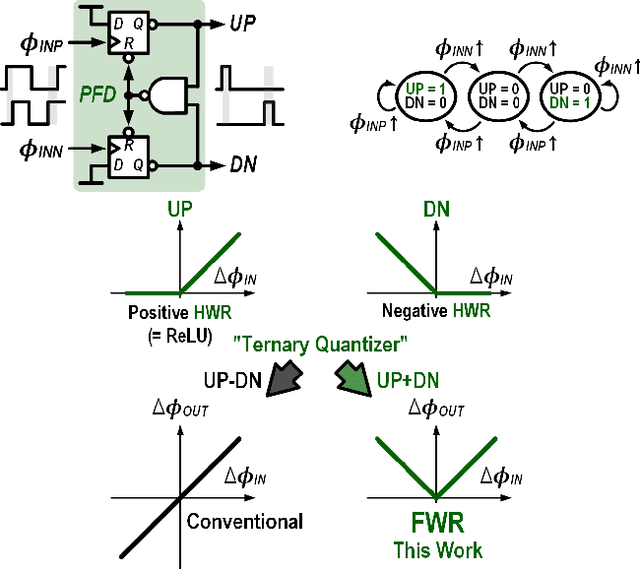
Abstract:This article presents the first keyword spotting (KWS) IC which uses a ring-oscillator-based time-domain processing technique for its analog feature extractor (FEx). Its extensive usage of time-encoding schemes allows the analog audio signal to be processed in a fully time-domain manner except for the voltage-to-time conversion stage of the analog front-end. Benefiting from fundamental building blocks based on digital logic gates, it offers a better technology scalability compared to conventional voltage-domain designs. Fabricated in a 65 nm CMOS process, the prototyped KWS IC occupies 2.03mm$^{2}$ and dissipates 23 $\mu$W power consumption including analog FEx and digital neural network classifier. The 16-channel time-domain FEx achieves 54.89 dB dynamic range for 16 ms frame shift size while consuming 9.3 $\mu$W. The measurement result verifies that the proposed IC performs a 12-class KWS task on the Google Speech Command Dataset (GSCD) with >86% accuracy and 12.4 ms latency.
Spiking Cochlea with System-level Local Automatic Gain Control
Feb 14, 2022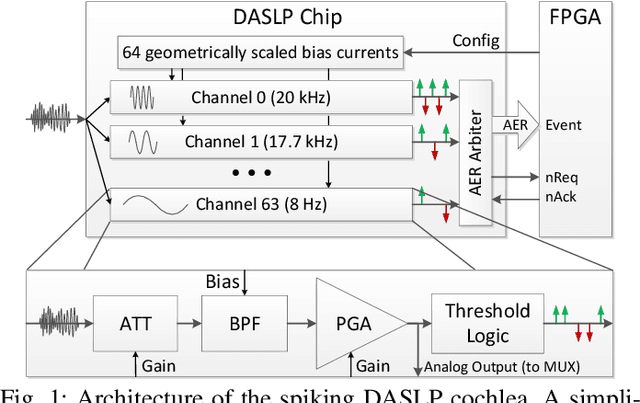
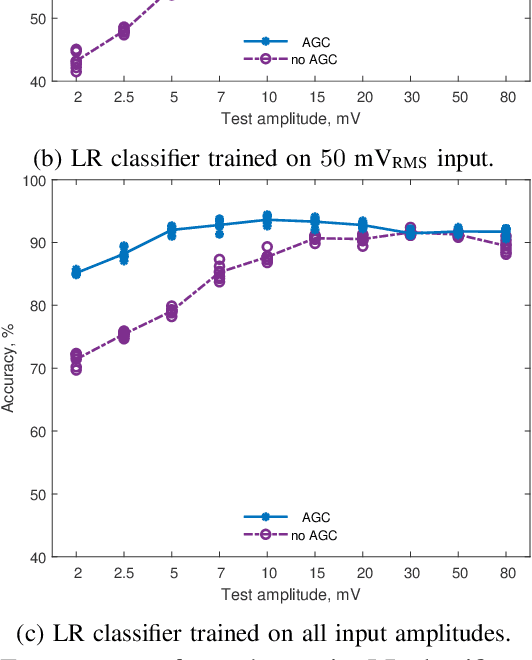
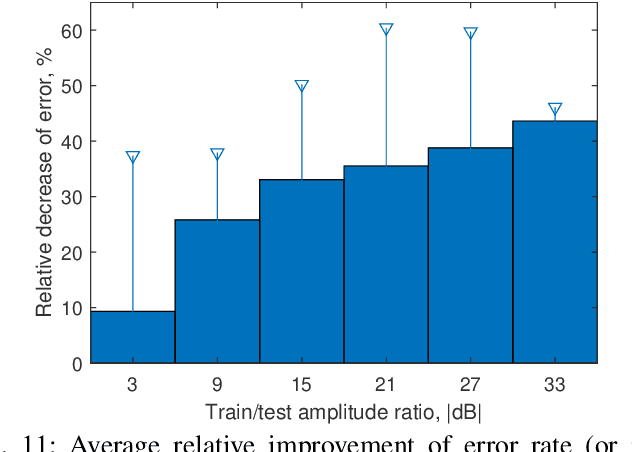
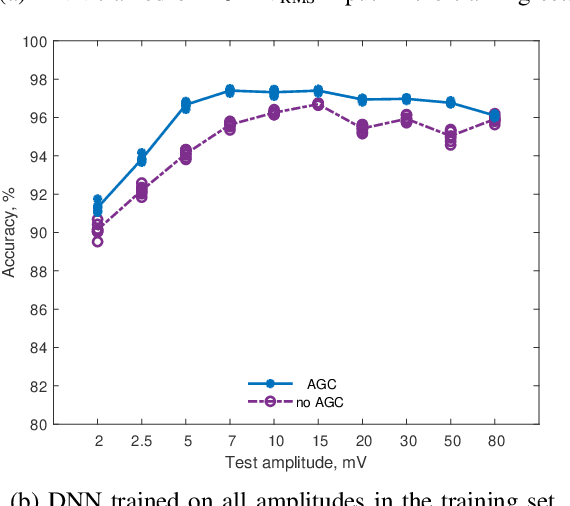
Abstract:Including local automatic gain control (AGC) circuitry into a silicon cochlea design has been challenging because of transistor mismatch and model complexity. To address this, we present an alternative system-level algorithm that implements channel-specific AGC in a silicon spiking cochlea by measuring the output spike activity of individual channels. The bandpass filter gain of a channel is adapted dynamically to the input amplitude so that the average output spike rate stays within a defined range. Because this AGC mechanism only needs counting and adding operations, it can be implemented at low hardware cost in a future design. We evaluate the impact of the local AGC algorithm on a classification task where the input signal varies over 32 dB input range. Two classifier types receiving cochlea spike features were tested on a speech versus noise classification task. The logistic regression classifier achieves an average of 6% improvement and 40.8% relative improvement in accuracy when the AGC is enabled. The deep neural network classifier shows a similar improvement for the AGC case and achieves a higher mean accuracy of 96% compared to the best accuracy of 91% from the logistic regression classifier.
 Add to Chrome
Add to Chrome Add to Firefox
Add to Firefox Add to Edge
Add to Edge